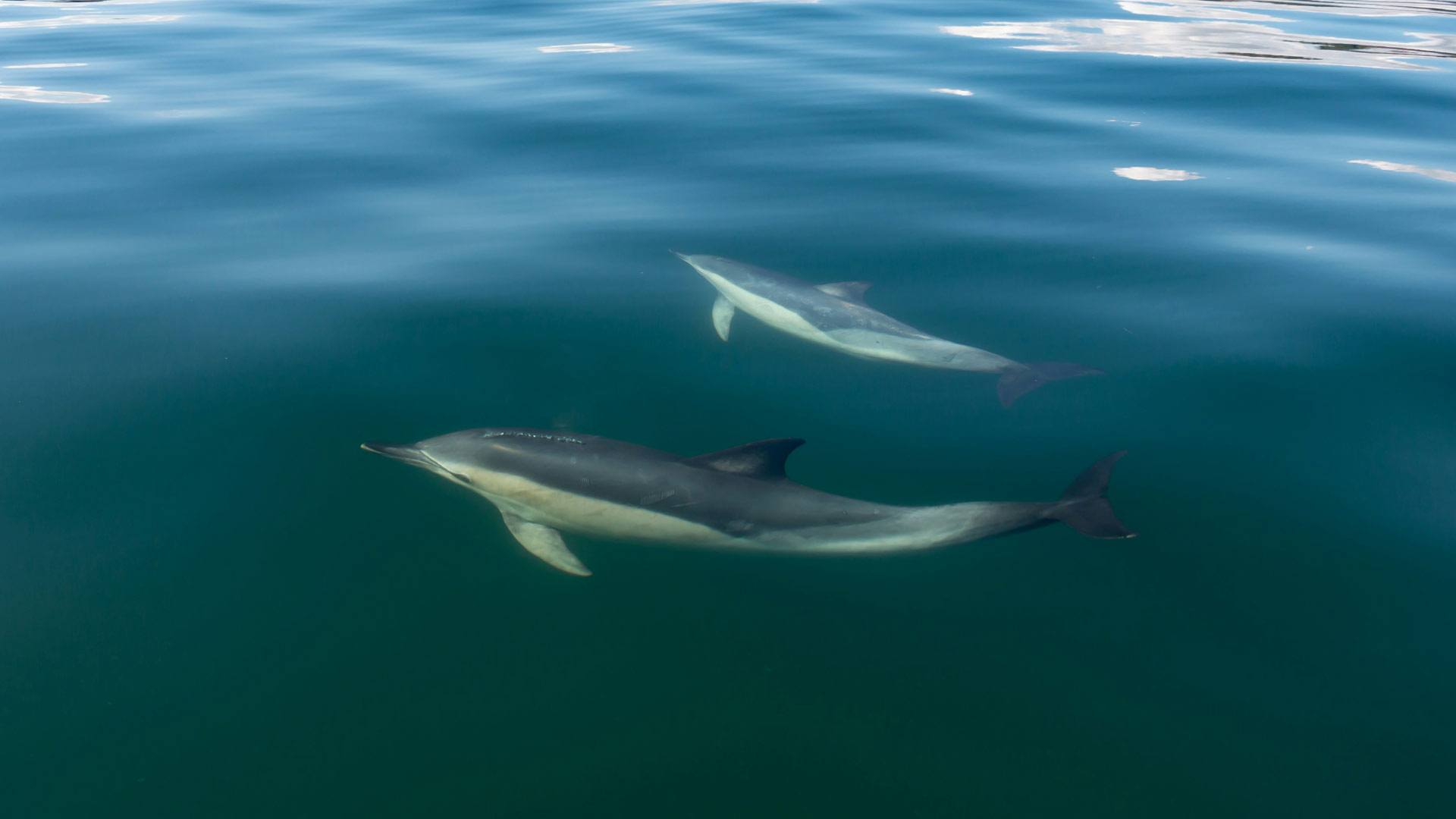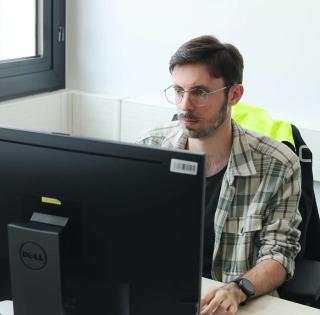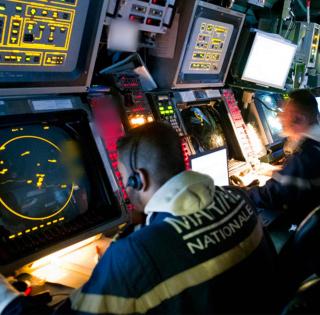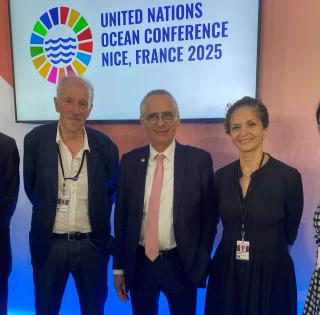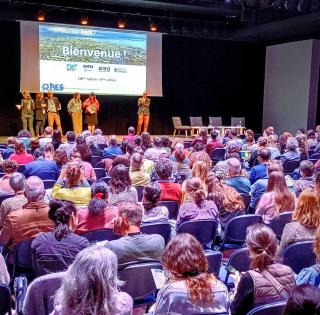
Passive acoustic monitoring
Light only travels about ten meters underwater, quickly reducing visibility. Sound, on the other hand, travels five times faster than air and is only slightly attenuated, making acoustic communication the most effective means of transmitting information underwater. Therefore, cetaceans emit a wide range of sounds in a wide range of frequencies to communicate, navigate and hunt. Passive acoustic monitoring is a technique that uses one or several instruments (including at least a waterproof microphone or hydrophone and an acquisition card) to passively record and collect information about the underwater soundscape, in particular the acoustic presence of cetaceans.
The data collection protocol
For this project, 7 listening sites were selected in the northern part of the park (Figure 1). Each site is equipped with two autonomous instruments that store the recorded data: a F-POD (Cetacean POrpoise Detector, Chelonia Ltd) echolocation click detector and a Sylence-LP 440 (RTSYS – Underwater Acoustics & Drones), a large-bandwidth autonomous recording device. Two different mooring systems have been designed according to the depth of the listening site: one adapted to coastal sites (sites E and F, at depths between 25 and 35 meters) and one adapted to more offshore sites (sites A, B, C, D and G, at depths between 60 and 120 meters). These autonomous instruments are permanently installed at each site, and the recordings are retrieved every three months. During these inspections, the teams may come across a few surprises – like in December 2022, when a hydrophone broke loose from its mooring. It was found 2 months later in northern Germany by the DGzRS – Die Deutsche Gesellschaft zur Rettung Schiffbrüchiger (German Maritime Search and Rescue Service).
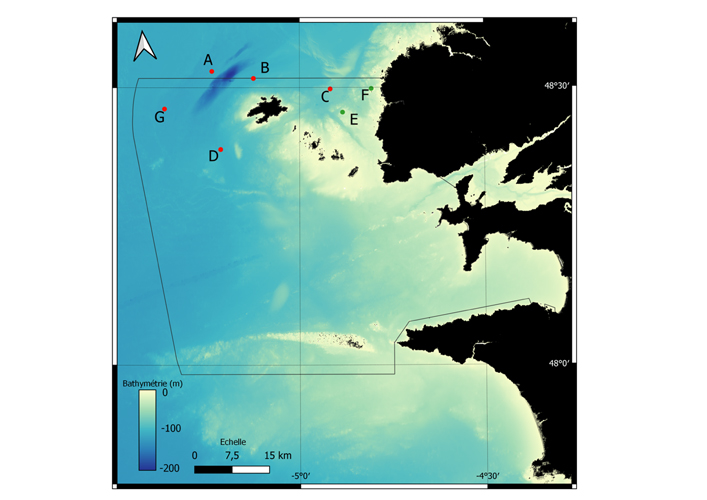
Figure 1: Summary of the positions of the 7 listening points within the perimeter of the Iroise Marine Natural Park (the red dots marked A, B, C, D & G: offshore mooring systems with acoustic release beacons and weights on the seabed, and the red dots marked E & F: inshore mooring systems surveyed by divers)
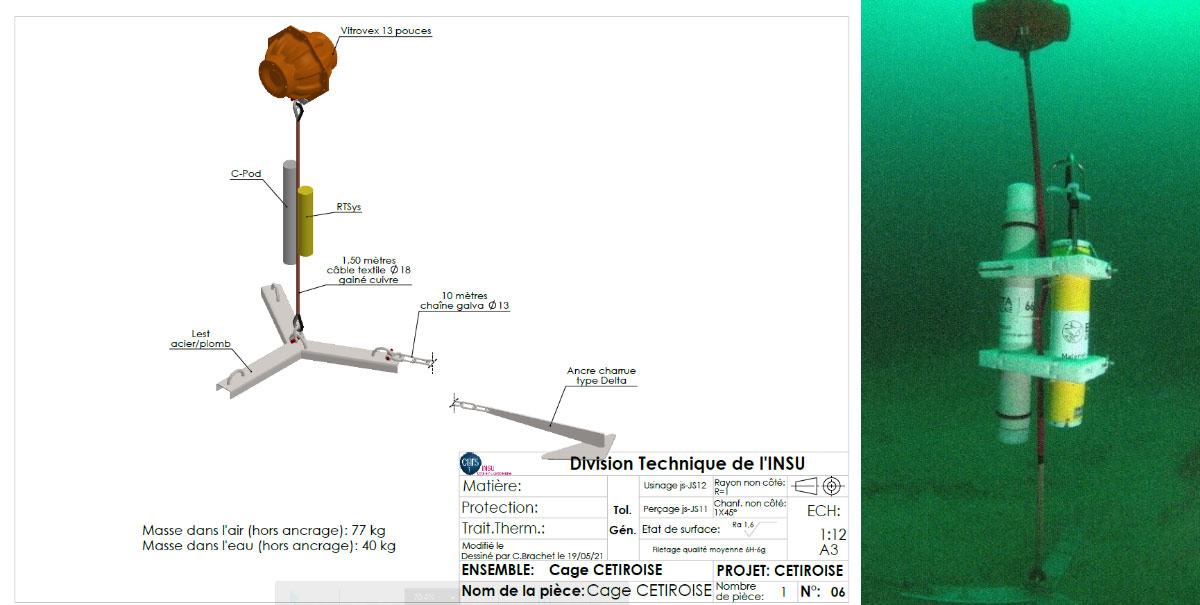
Figure 2: Coastal mooring system on the seabed surveyed by divers (sites E & F). Photo credits: Yannis Turpin (PNMI).
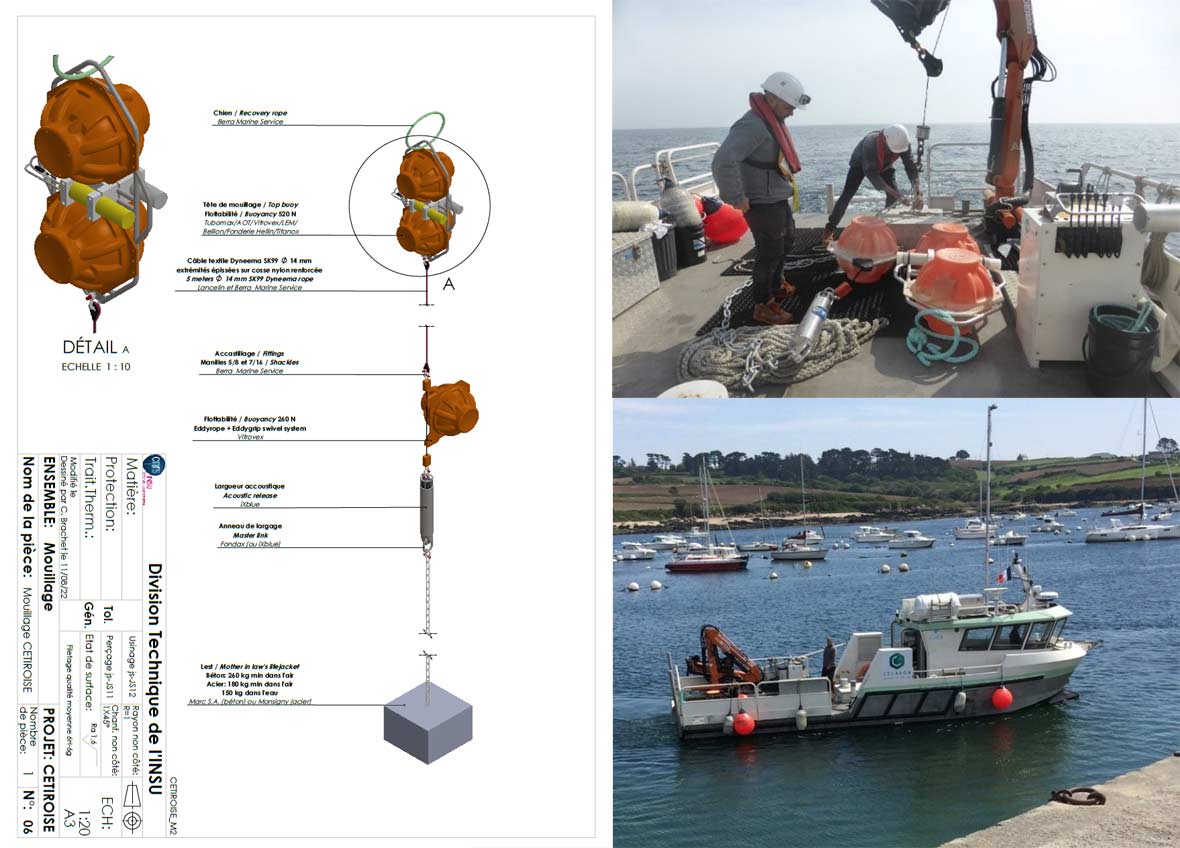
Figure 3: Offshore mooring line with acoustic release beacon and seabed weight (sites A, B, C, D and G). Photo credits: ENSTA Bretagne
Analysis methods
A number of analysis steps are required to extract important information from recordings. The first step in processing the raw data is to analyze the noise levels, which provides long-term spectrograms and spectral power densities over complete recording phases. Next, several analysis steps are required to extract the desired information from the raw acoustic signal. To begin with, part of the broadband data is manually annotated by analysts. However, this technique is too time-consuming to analyze the entire dataset, so automatic detectors are used as a second analysis step. The next very important step is to calculate the performance of these automatic detectors by comparing their results with the manual detections previously carried out. Finally, the raw detections need to be statistically formatted and processed to obtain results on the presence of cetaceans in the Iroise Marine Natural Park.
Some of the results
By analyzing the recordings, the analysts were able to identify patterns of cetacean activity and determine presence rates. These patterns vary depending on the season and the time of day.
Delphinids were frequently detected throughout the year, with the highest numbers at offshore sites. These results confirm that the northern sector of the park is particularly attractive to delphinids, especially off the coast of Ushant, where they can be found all year round. The number of whistle sounds detected, an indicator of social behavior, is greater than the number of clicks (an indicator of feeding behavior) across all of the sites. However, this contrast could be partly explained by the different detection performance of the two types of signals and/or by the fact that the detection radius of clicks is smaller than that of whistles.
Porpoises were detected at all sites, confirming the presence of this species throughout the northern part of the park. Porpoises are detected more frequently in the summer.
Among the larger cetaceans, minke whale vocalizations were recorded to the west of Ushant in the fall, coinciding with several visual sightings in September and October 2022 (ObsEnMer data export). On the other hand, no fin whale vocalizations were detected, but this does not mean that they are not present in the area. The vocalizations of this species are low frequency. Tidal currents can also be detected at these frequencies, which may have masked the vocalizations of the mysticetes. One hypothesis is that vocalizations are only made by males and only at certain times of the year. It is also possible that the species was present but there were no vocalizations in the area during the monitoring period.
The ENSTA Bretagne team continues to work on this information-rich dataset to complete and improve these results. Data collection at the 2 coastal points will continue beyond the CETIROISE project in order to gain insight into possible inter-annual variations in cetacean visits to the park.
Although passive acoustic monitoring cannot be used to determine the number of cetaceans present in the park, the CETIROISE project has confirmed that it is an important place for cetaceans. In particular, it highlights the presence of delphinids throughout the year, even continuously in areas off the coast of Ushant.






